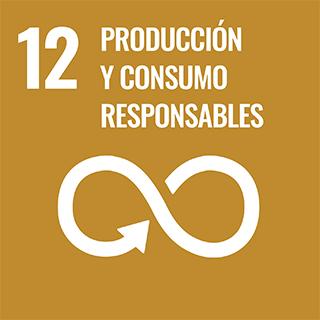
Indexed in
License and use
Citations
Impact on the Sustainable Development Goals (SDGs)

Analysis of institutional authors
Del Cañizo C.AuthorFuertes Marrón D.AuthorDasilva Villanueva N.AuthorCaballero L.j.AuthorProduction of upgraded metallurgical-grade silicon for a low-cost, high-efficiency, and reliable PV technology
Publicated to:Frontiers In Photonics. 5 - 2024-01-01 5(), DOI: 10.3389/fphot.2024.1331030
Authors: Míguez Novoa JM; Hoffmann V; Forniés E; Mendez L; Tojeiro M; Ruiz F; Funes M; del Cañizo C; Fuertes Marrón D; Dasilva Villanueva N; Caballero LJ; Arıkan B; Turan R; Canar HH; Sánchez Plaza G
Affiliations
Abstract
Upgraded metallurgical-grade silicon (UMG-Si) has the potential to reduce the cost of photovoltaic (PV) technology and improve its environmental profile. In this contribution, we summarize the extensive work made in the research and development of UMG technology for PV, which has led to the demonstration of UMG-Si as a competitive alternative to polysilicon for the production of high-efficiency multicrystalline solar cells and modules. The tailoring of the processing steps along the complete Ferrosolar’s UMG-Si manufacturing value chain is addressed, commencing with the purification stage that results in a moderately compensated material due to the presence of phosphorous and boron. Gallium is added as a dopant at the crystallization stage to obtain a uniform resistivity profile of ∼1 Ω cm along the ingot height. Defect engineering techniques based on phosphorus diffusion gettering are optimized to improve the bulk electronic quality of UMG-Si wafers. Black silicon texturing, compatible with subsequent gettering and surface passivation, is successfully implemented. Industrial-type aluminum back surface field (Al-BSF) and passivated emitter and rear cell (PERC) solar cells are fabricated, achieving cell efficiencies in the range of those obtained with conventional polysilicon substrates. TOPCon solar cell processing key steps are also tested to further evaluate the potential of the material in advanced device architectures beyond the PERC. Degradation mechanisms related to light exposure and operation temperature are shown to be insignificant in UMG PERC solar cells when a regeneration step is implemented, and PV modules with several years of outdoor operation demonstrated similar performance to reference ones based on poly-Si. Life cycle analysis (LCA) is carried out to evaluate the environmental impact of UMG-based PV technology when compared to poly-Si-based technology, considering different scenarios for both the manufacturing sites and the PV installations. Copyright © 2024 Míguez Novoa, Hoffmann, Forniés, Mendez, Tojeiro, Ruiz, Funes, del Cañizo, Fuertes Marrón, Dasilva Villanueva, Caballero, Arıkan, Turan, Canar and Sánchez Plaza.
Keywords
Quality index
Bibliometric impact. Analysis of the contribution and dissemination channel
The work has been published in the journal Frontiers In Photonics due to its progression and the good impact it has achieved in recent years, according to the agency Scopus (SJR), it has become a reference in its field. In the year of publication of the work, 2024 there are still no calculated indicators, but in 2023, it was in position , thus managing to position itself as a Q2 (Segundo Cuartil), in the category .
Impact and social visibility
Leadership analysis of institutional authors
This work has been carried out with international collaboration, specifically with researchers from: Turkey.
